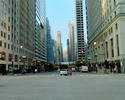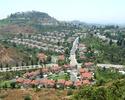America is still a mobile nation. Back in the 2000-2010 decade, 12.9 million people moved interstate, nearly five percent of the total population. In the 2010s the population has been a bit less mobile, with net domestic migration of 11.7 million residents, slightly under four percent. Nonetheless, 11.7 million is a large number. This is nearly equal to the population of Ohio, with only five states being larger read more »
Let's Stop Shaming the Suburbs
I have been a New Yorker for over a decade now, but I have spent the past few months in the Hampton Roads region of Virginia, since it’s a little easier on our family during the pandemic. Locals joke that it’s a “suburb of nowhere,” and it’s true that the region may lack some of the density and sizable cultural institutions that define the New York experience—24/7 amenities, robust public transit, and the sidewalk ballets. But the tidewater region is anything but an isolated wasteland, and spending time here has been absolutely lovely. read more »
- Login to post comments
Something in New York is Dying
A recent blog post by investor and stand-up comedian James Altucher (mentioned here) arguing that New York is dead forever attracted the hostility of many New Yorkers. Fellow comedian Jerry Seinfeld wrote a New York Times op-ed calling Altucher a “whimpering putz.” Mayor De Blasio, naturally, agrees with Seinfeld. read more »
- Login to post comments
2020 Election, Market Flywheel, and more
2020 Election
The outcome of the election is likely to be closer than most observers expected only a few weeks ago. In their view at the time, President Trump’s unusual communication style, his management of the pandemic, the poor economy (notwithstanding the stock market) and the urban protests all seemed to point to a Joe Biden victory in November.
Since then, several factors have emerged however: read more »
- Login to post comments
Dwellings in Decline as Demographics Drive Demand
Rarely has the question of where, why and how people will live, work and play been so important, as the impact of COVID-19 begins to transform the demand and supply equation across the Australian property market. read more »
- Login to post comments
COVID-19 and Walking: The Great Equalizer
Walking has been having a moment for a while now. Books and research have been proliferating about the joys and benefits of walking, which include cultural exchange, spiritual enlightenment, and cognitive and creative benefits. read more »
- Login to post comments
Why the 2020 Election Will be Decided in Suburbia
American politics is increasingly about dueling geographies. Democrats have become the party of the nation’s cities, while the Republican Party finds its base in rural, small town and low-density exurban America read more »
- Login to post comments
Lazaretto Dining
Last week a friend asked me for help in his back garden. This is the first time he’s owned a proper home rather than a condo and he’s not sure how to manage the yard. We’re in a part of the world where it doesn’t rain for most of the year and hand watering gets old fast. I brought over samples of the irrigation tubes and drip emitters I like to use and walked him through the installation process. read more »
- Login to post comments
Is it About Black Lives or Is It About Power?
In 2012 I started my career as a structural engineer in the industrial suburbs of Johannesburg. This was my first job after completing my studies and the only rent that I could afford was a granny flat in the backyard of a property that belonged to an old Zimbabwean couple named Archie and Gayle. They were by then in their late 70s and they were still working to earn a living. read more »
- Login to post comments
Highway Subsidies in 2018
Highway subsidies in 2018 totaled to $47.1 billion, substantially less than the $54.3 billion in subsidies received by transit agencies. Considering that highways move about 100 times as many passenger miles (and infinitely more freight) than transit, this is a serious disparity. read more »
- Login to post comments






















